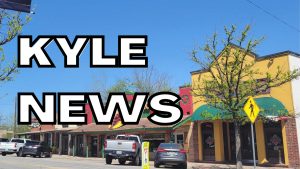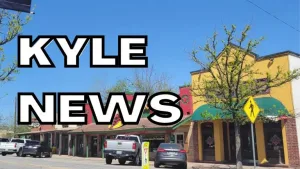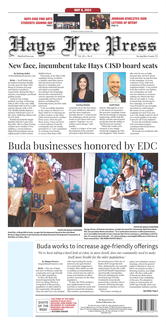By Moses Leos III
Hays County can now add the city of Kyle to its list of entities supporting its FM 150 realignment project.
By a 7-0 vote on Sept. 15, the Kyle City Council approved a resolution supporting the corridor that will make up the first stage of the proposed Kyle Loop project.
But with a variety of potentially affected property owners within the route, officials now work to find the right path for the new road.
“We will ensure that the project would be good to the property owners in such a way where we keep design speeds as well as design of the roadway to be in harmony with the topography and adjacent development,” Kyle City Manager Scott Sellers said last week.
According to Joe Cantalupo, project manager at Friese and Associates, the resolution is one of the first steps toward pinpointing the location of the new road.
But Cantalupo said the county needed a resolution of support from Kyle before moving forward. He said the county and KFriese is in “suspended animation” with TxDOT on the level of environmental analysis for the project.
Cantalupo said the passage of the resolution would allow them to talk to TxDOT about the level of environmental processes for the project.
“It means how quickly can we go through and figure out where the road can go,” Cantalupo said.
He added that the county and TxDOT will work with and coordinate with property owners on the northern end of the corridor.
In April, Hays County tabbed its preferred alternative, Corridor C, as the path the FM 150 realignment project would follow.
Corridor C would connect FM 150 near Arroyo Ranch Road to Yarrington Road in San Marcos.
It was done after the county completed its comparative analysis on four corridor options for the realignment. Other options included one that connected Kohler’s Crossing to FM 150, bisecting the land between Hays High and Barton Middle Schools. Another option featured a corridor that crossed the Blanco River several times.
A fourth option looked at expanding Center Street in downtown Kyle. But according to Cantalupo, that option would have “changed the complexion of the city.”
But resident Tim Miller, who owns Millburg Farms along Opal Road, held concerns about the road bringing an increase in development to the area. In addition, he has environmental concerns, primarily about vehicle emissions stemming from the traffic along the realigned roadway.
“My farm will be polluted out of business,” Miller said during public comment.
Cantalupo said federal and state processes govern the project when it comes to emissions, and that KFriese would not “hold anything back” in regards to emissions testing.
He added the road would be built to “high standards” and that the county could build into the road water quality improvement measures.
“The runoff coming off of that road will be cleaner than what is coming off of the roads today,” Cantalupo said.
Council member Diane Hervol said she had concerns about how the new road could affect the downtown corridor.
Cantalupo said the road would separate through traffic from the locally bound traffic. Mayor Todd Webster said it could alleviate traffic that is going through Kyle neighborhoods in attempts to bypass Center Street or the railroad crossing.
“A year ago, I would have said it’s a big issue,” Webster said. “I think from my perspective, it gets traffic over the railroad without having to build a bridge over the railroad.”
Hays County Precinct No. 3 Commissioner Will Conley referenced the Ranch Road 12 extension in San Marcos. He said the road improvement didn’t affect traffic in downtown San Marcos.
Based on the county’s modeling of traffic, he said the “activity in the labyrinths of downtown has no worries of future traffic.”
“I believe if we don’t plan properly, it will be a strong detriment to your downtown area if there are no improvements,” Conley said.
While the option wasn’t the first for Webster, he said he supports it as the county assured the city FM 150 in Kyle will remain a state roadway.
“I want to make it clear that what is represented here is a commitment on (the county’s) part and an act of good faith based on the frank dialog of the impact this could have both financially and regionally,” Webster said.








